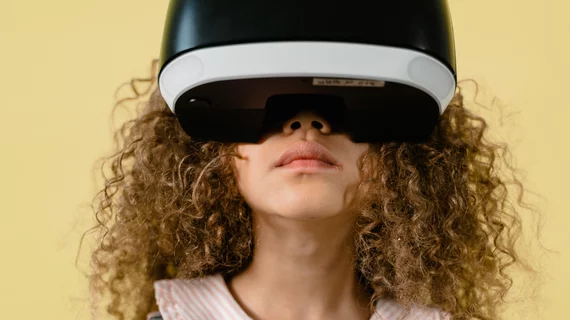Pediatric patients engaged in VR much less troubled by pain
Virtual reality was highly effective at distracting young patients experiencing physical pain during a recent randomized trial, according to a study published Aug. 25 in JAMA Network Open.
What’s more, the stress reduction extended to accompanying parents as well as clinicians administering the pain source under review, peripheral intravenous catheter (PIVC) placement.
For the experiment, Jeffrey Gold, PhD, and colleagues at the University of Southern California recruited 107 patients between 10 and 21 years old. All had an IV catheter inserted, but only half the field played VR games during the placement. The other half colored, sang, talked or listened to music.
On questionnaires completed after procedures, patients who received the VR intervention rated their anxiety at only 1.85 on a scale of 0 (no reaction) to 10 (extreme anxiety).
By contrast, the manually distracted group collectively landed at 3.14 points.
Similarly, clinicians in the VR group came in at 2.04 points vs. 3.34 points in the manual group.
Scores were similar for physical pain in the patients and perceptions thereof in parents and clinicians.
In their study discussion, Gold and co-authors state their trial is likely the first to prospectively investigate a large cohort across two clinical settings—in this case, a radiology department and an infusion center.
“The study’s results support the effectiveness of virtual reality in both settings, with no significant differences between settings found, and they extend the findings reported in a [previous] study of VR use among patients receiving phlebotomy,” the authors comment. “Scientific investigation of VR interventions across a variety of settings is necessary and may lend support for the flexibility of VR systems as nonpharmacological interventions for pain management.”
Gold expounds on the discussion in a news item posted by the hospital:
Some patients don’t even realize that their blood is being drawn. Compare that to a child who is panicking and screaming, and it’s a no-brainer. We want kids to feel safe.”
The study is available in full for free, and the news item is here.

